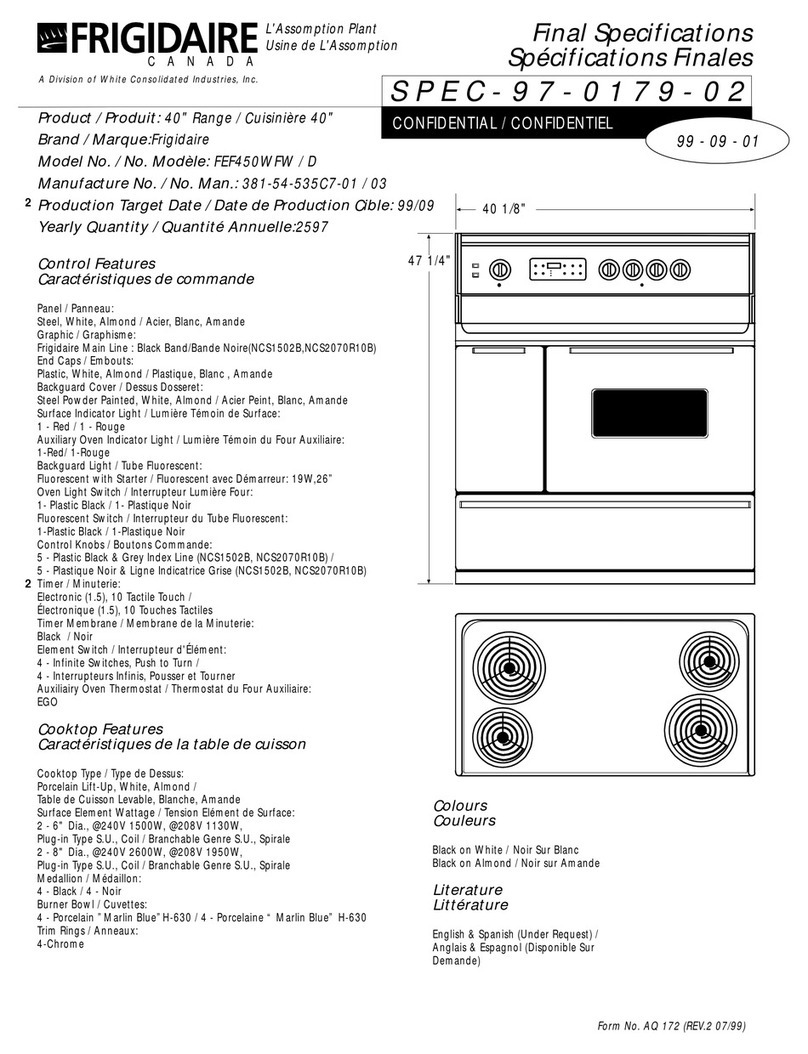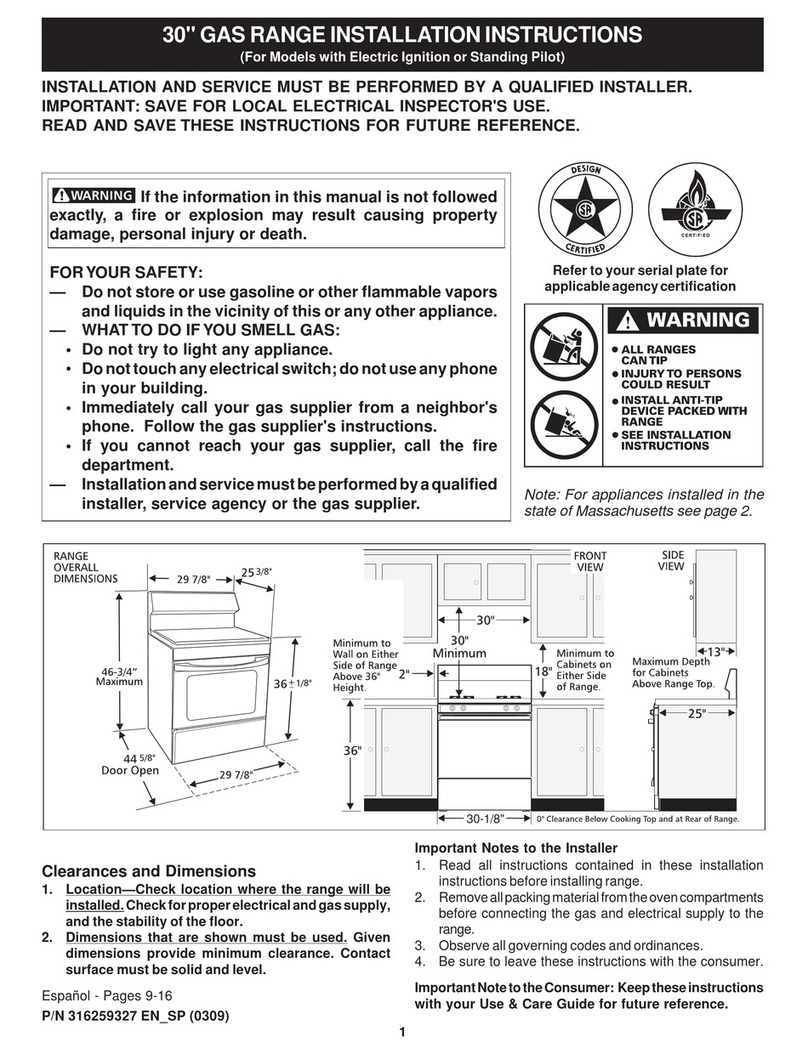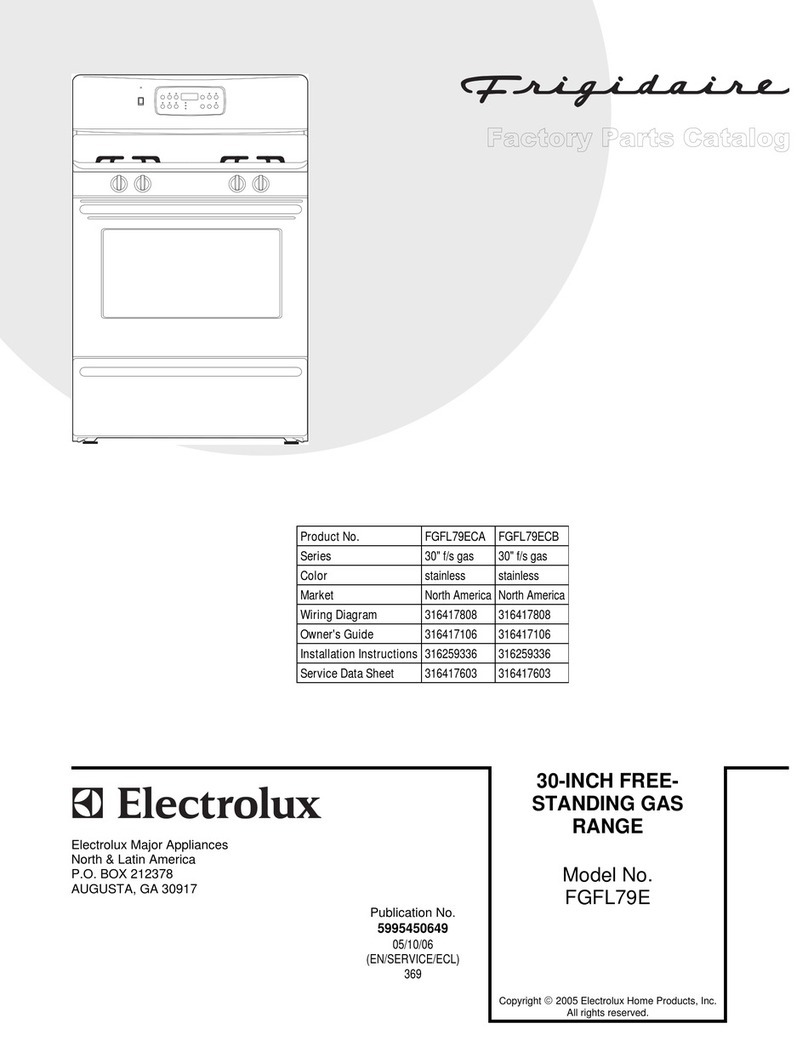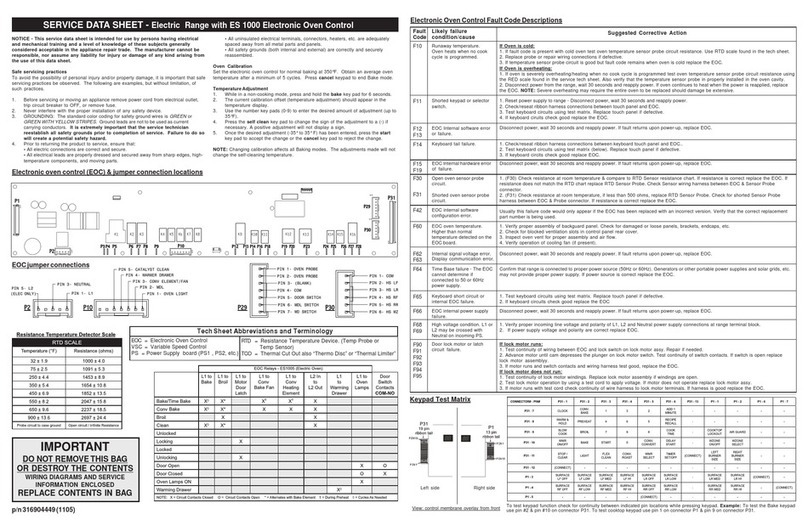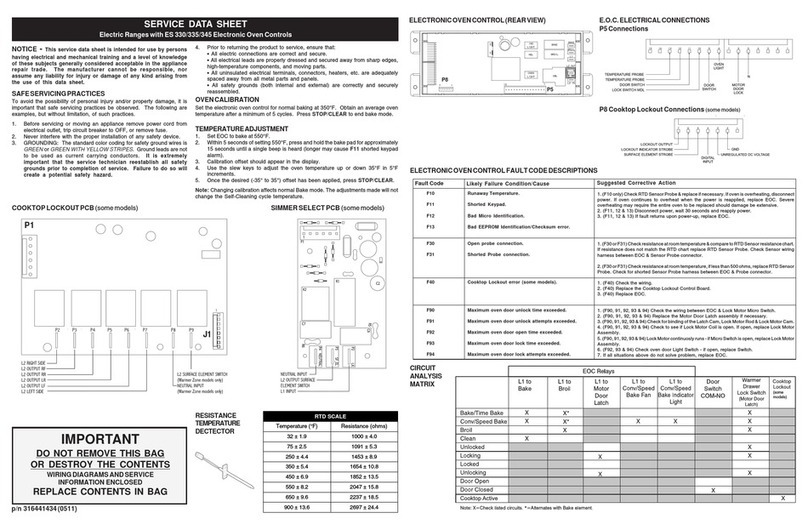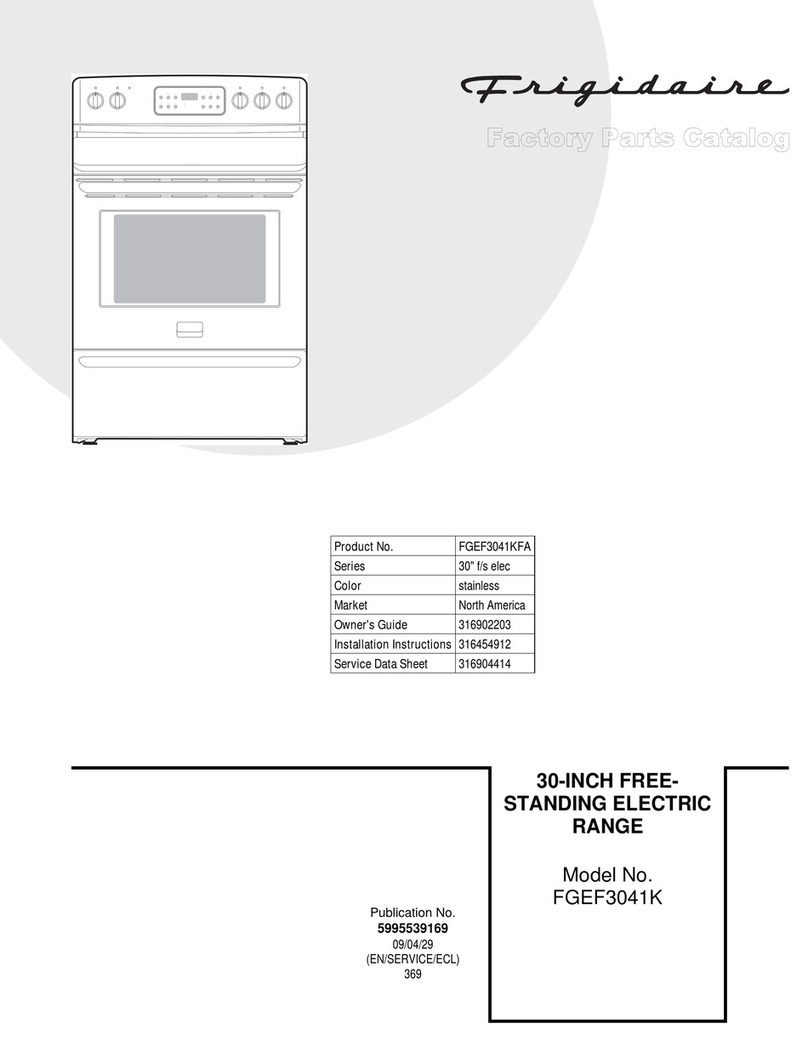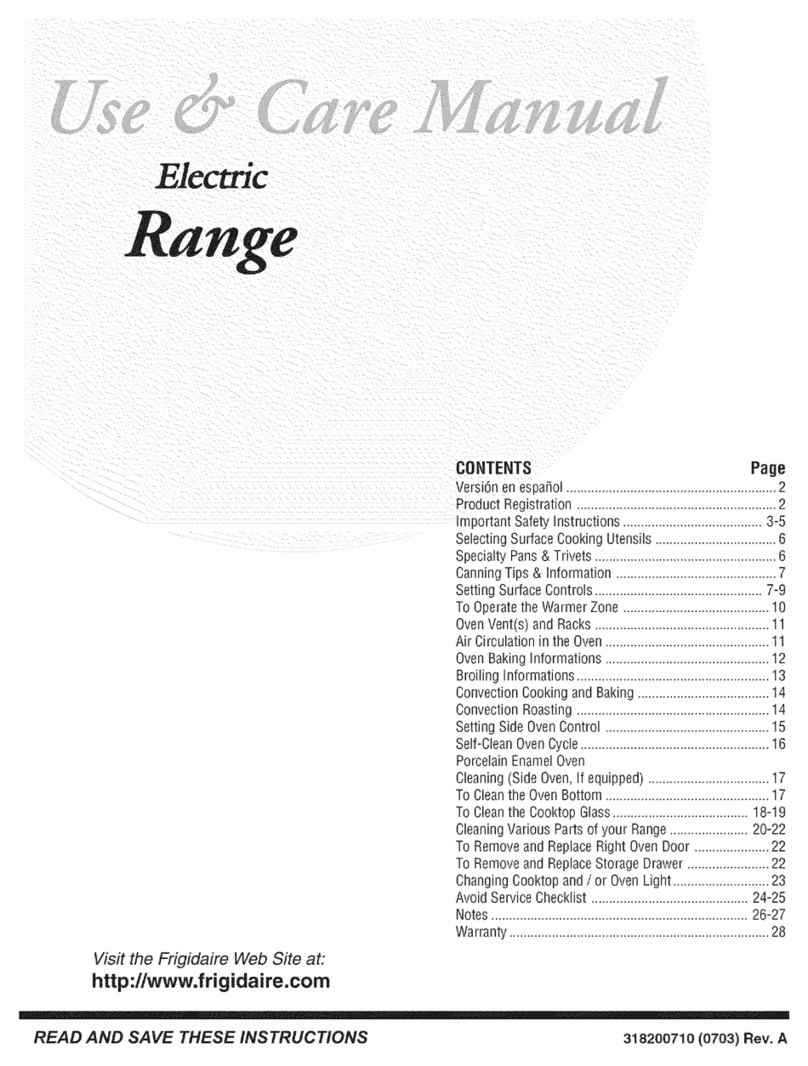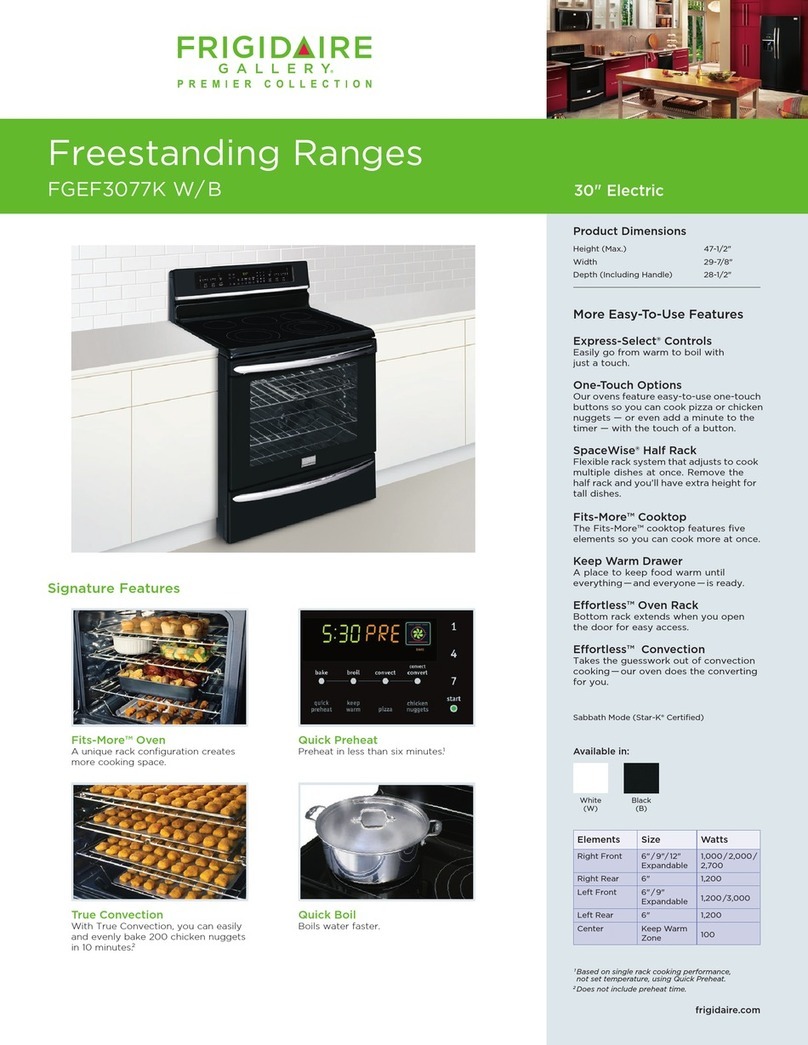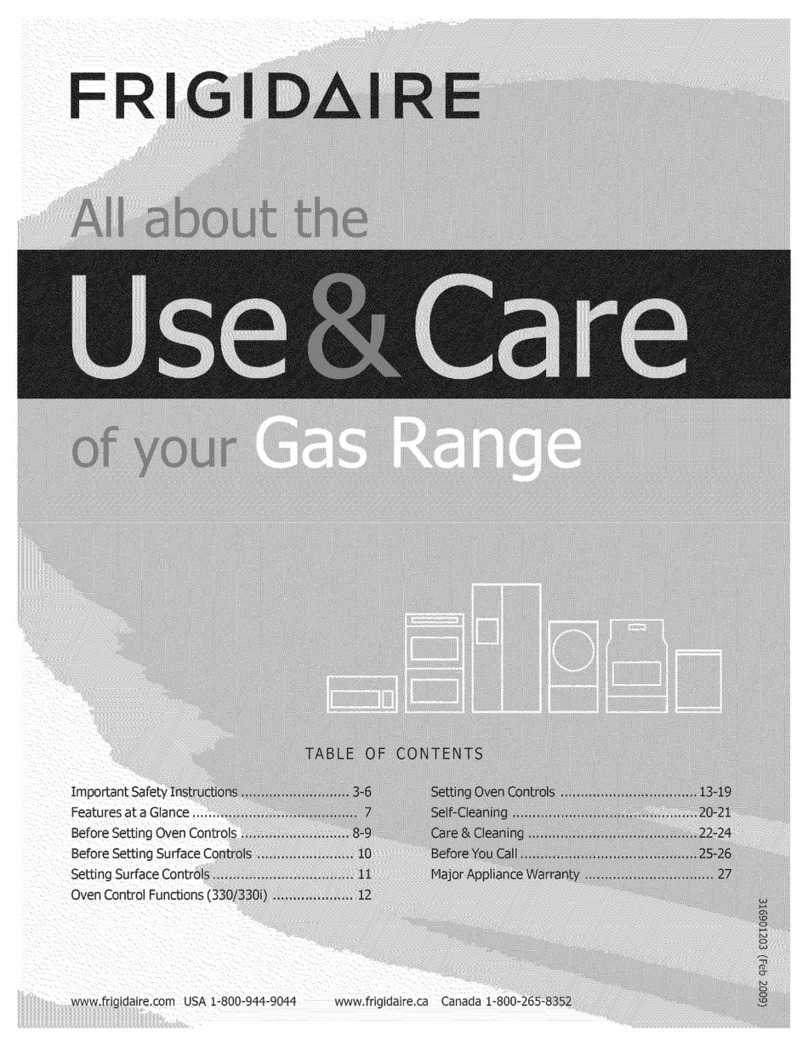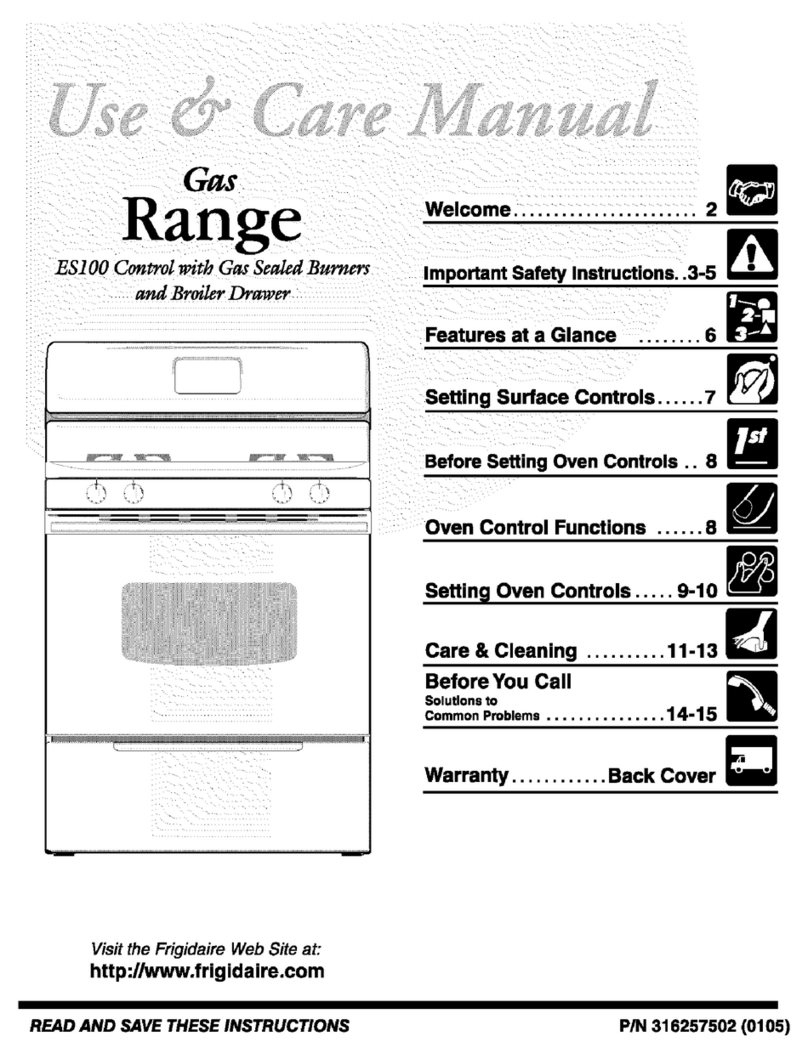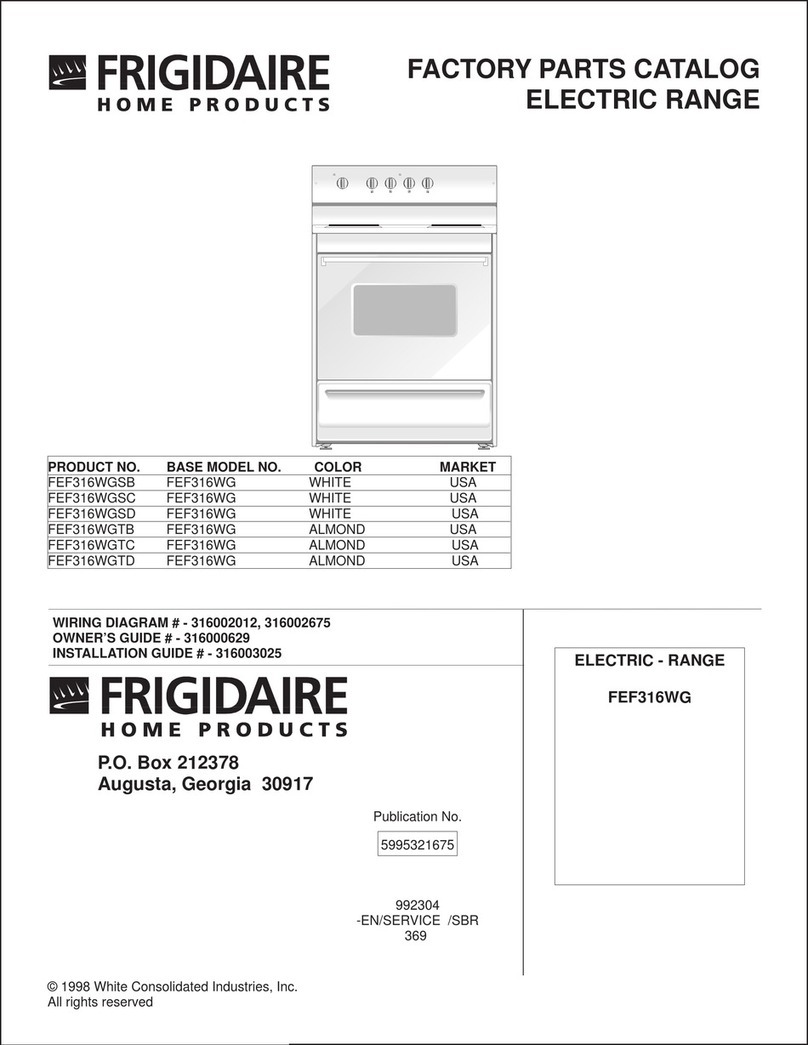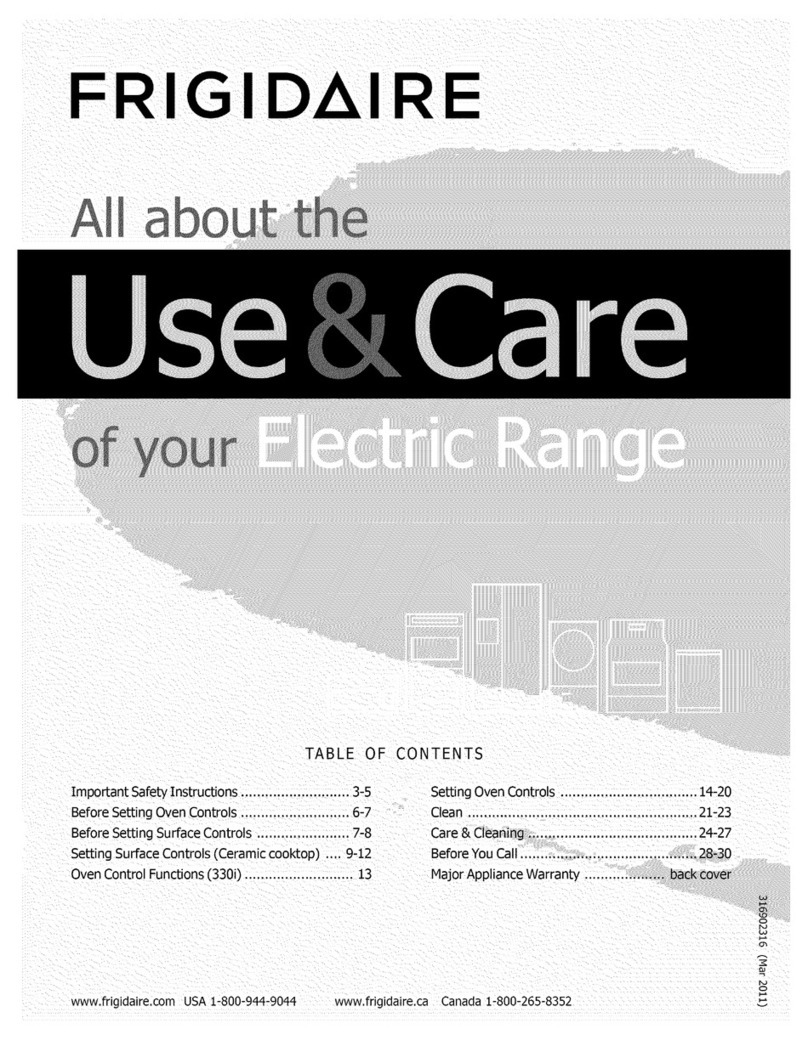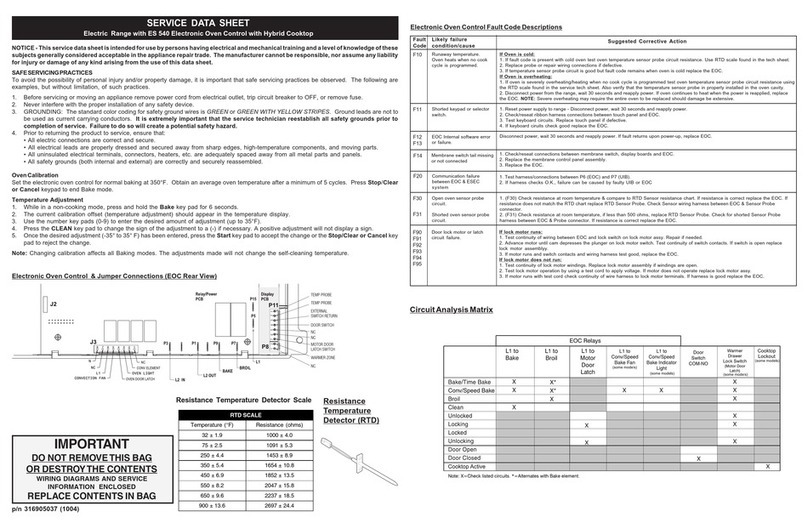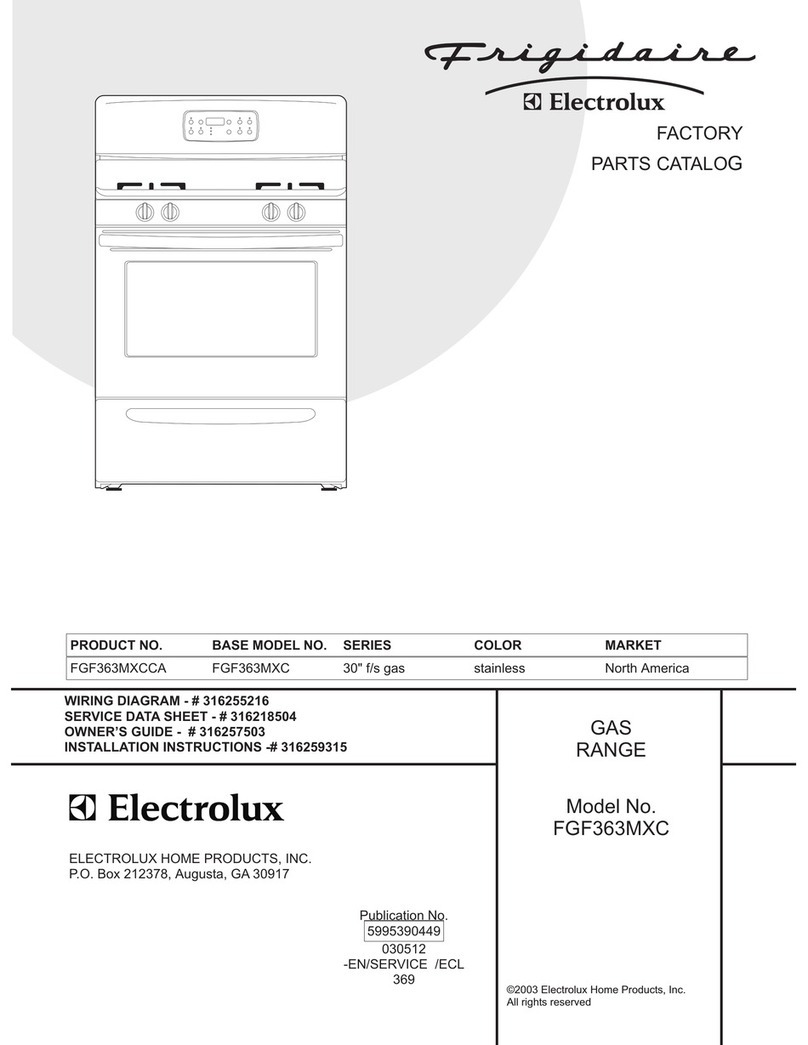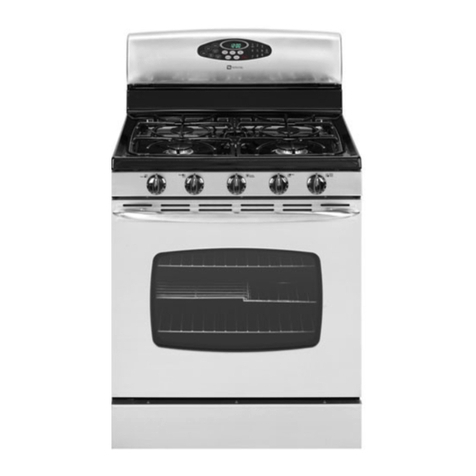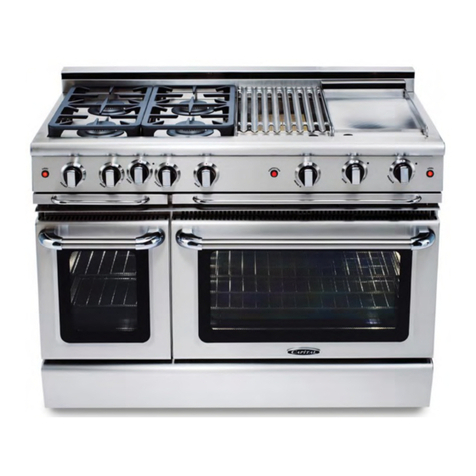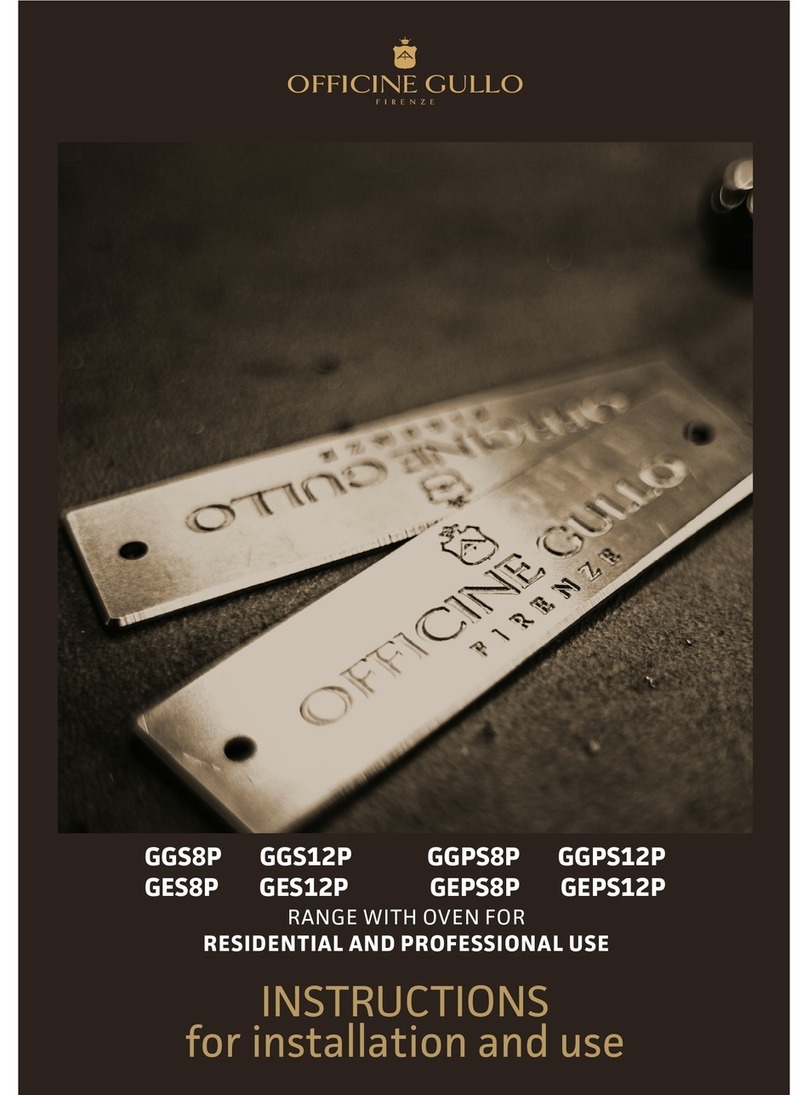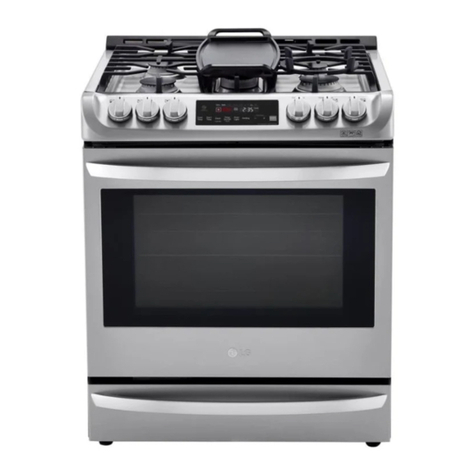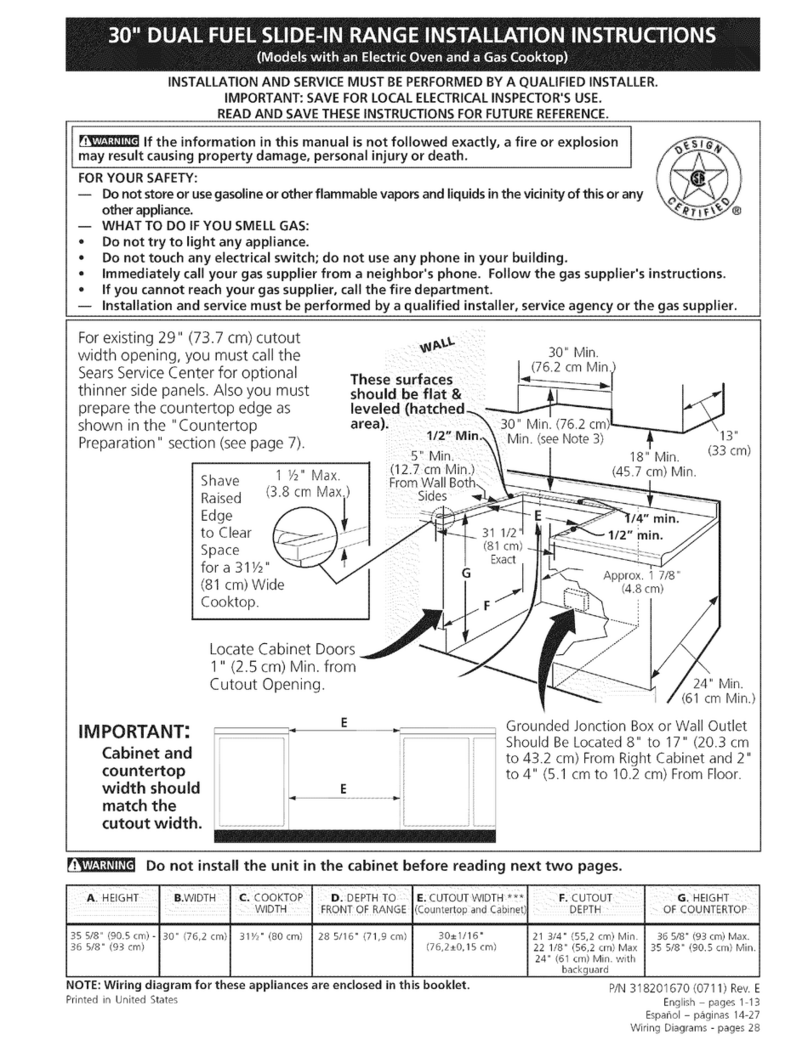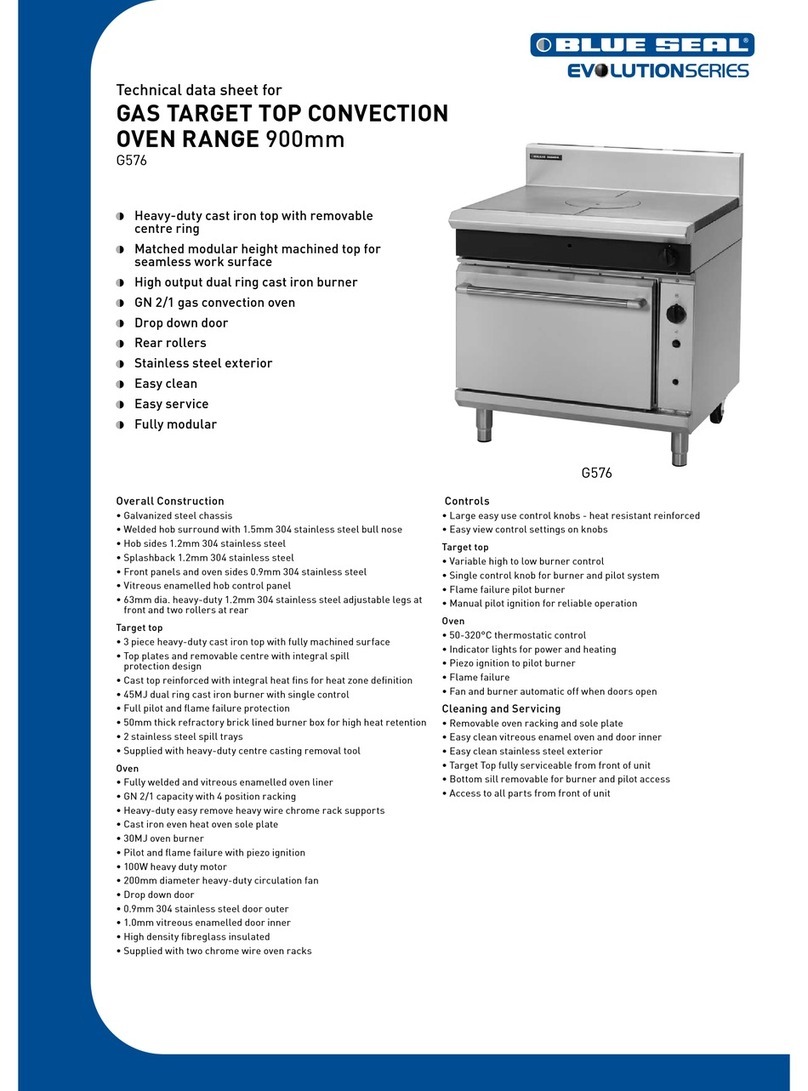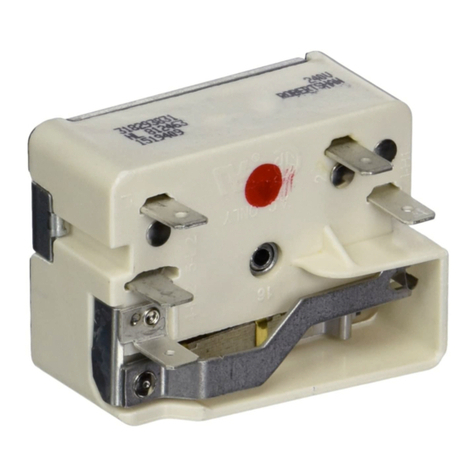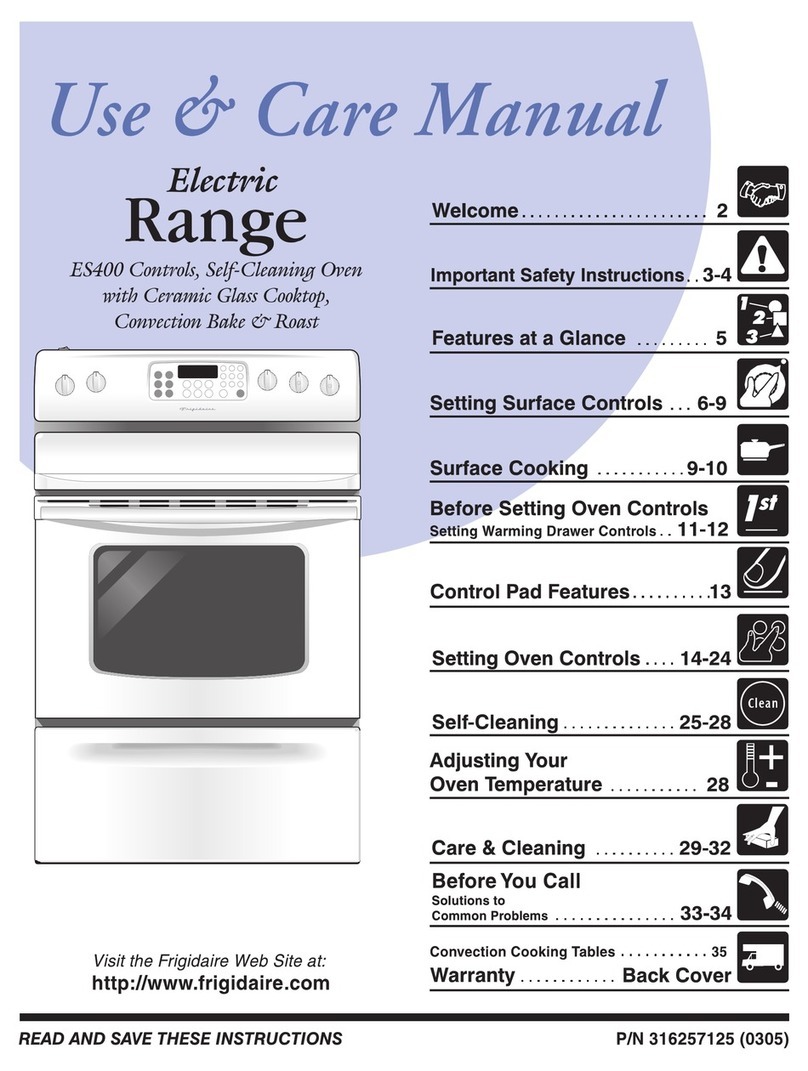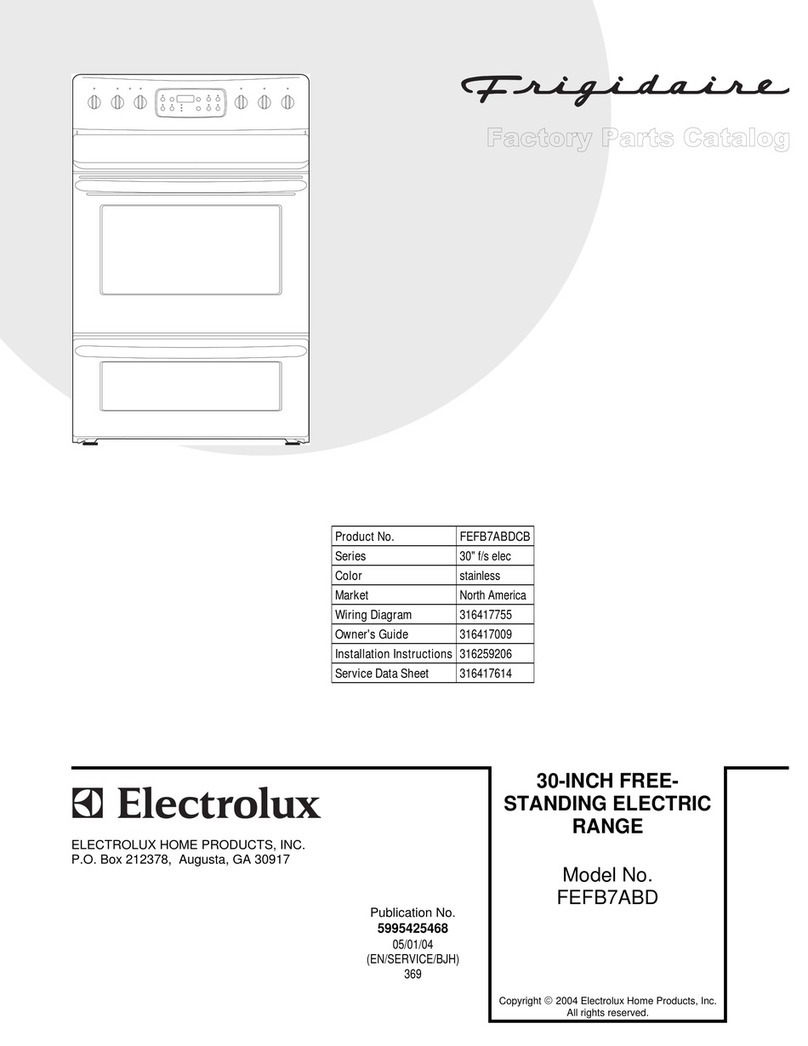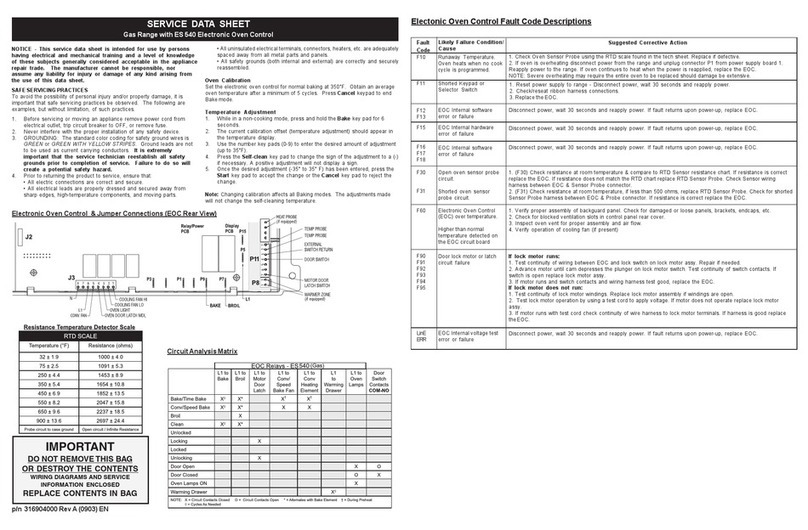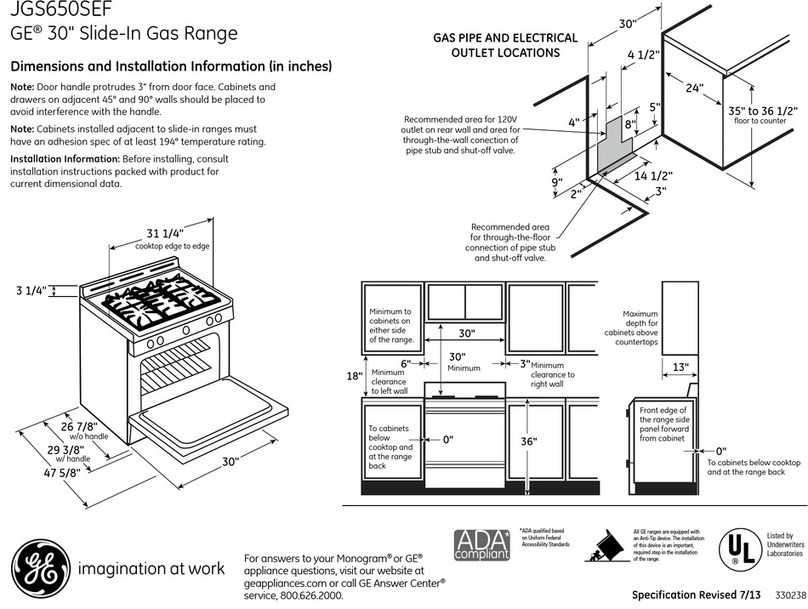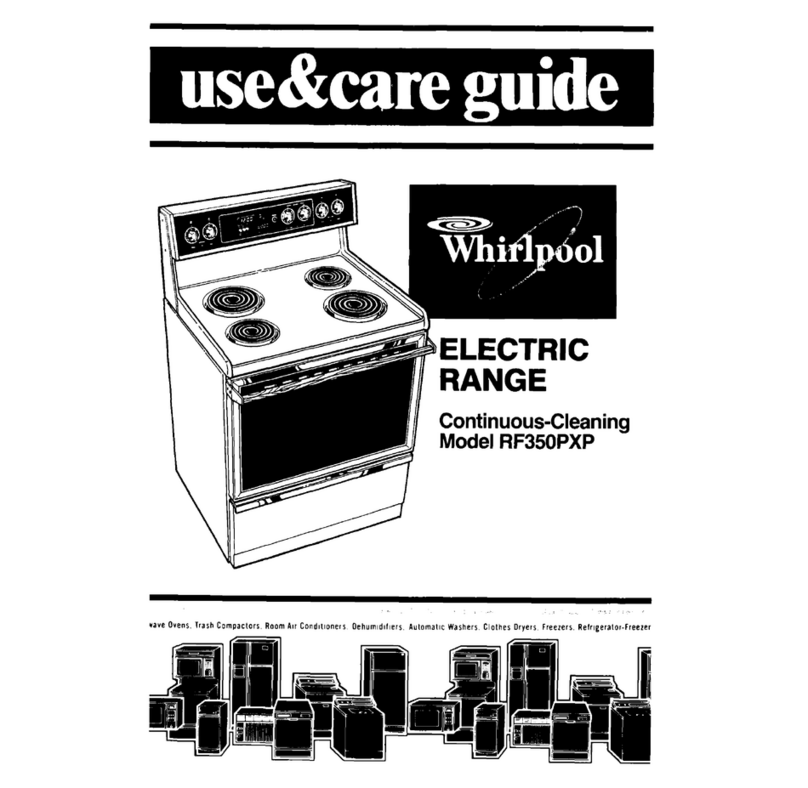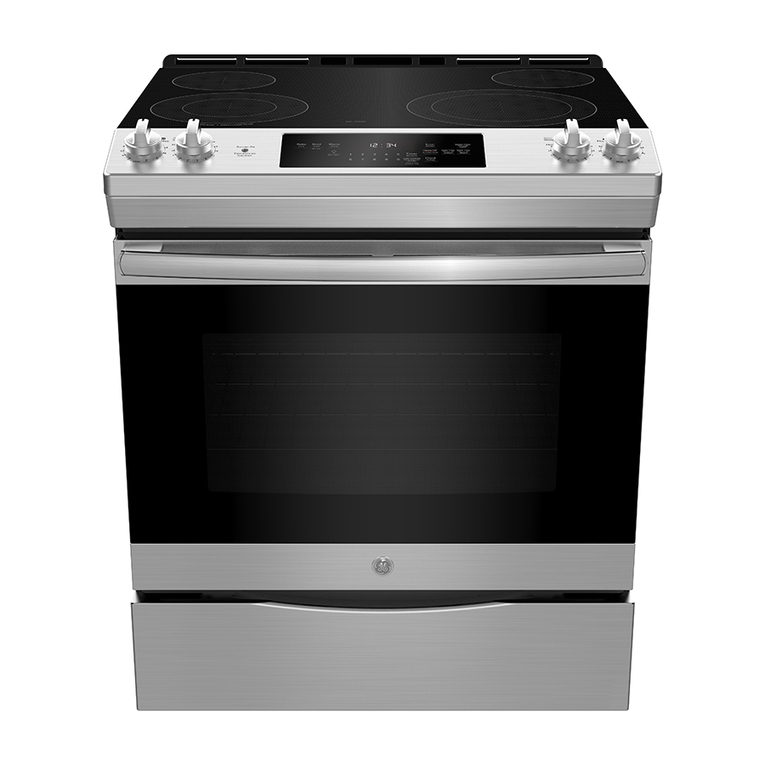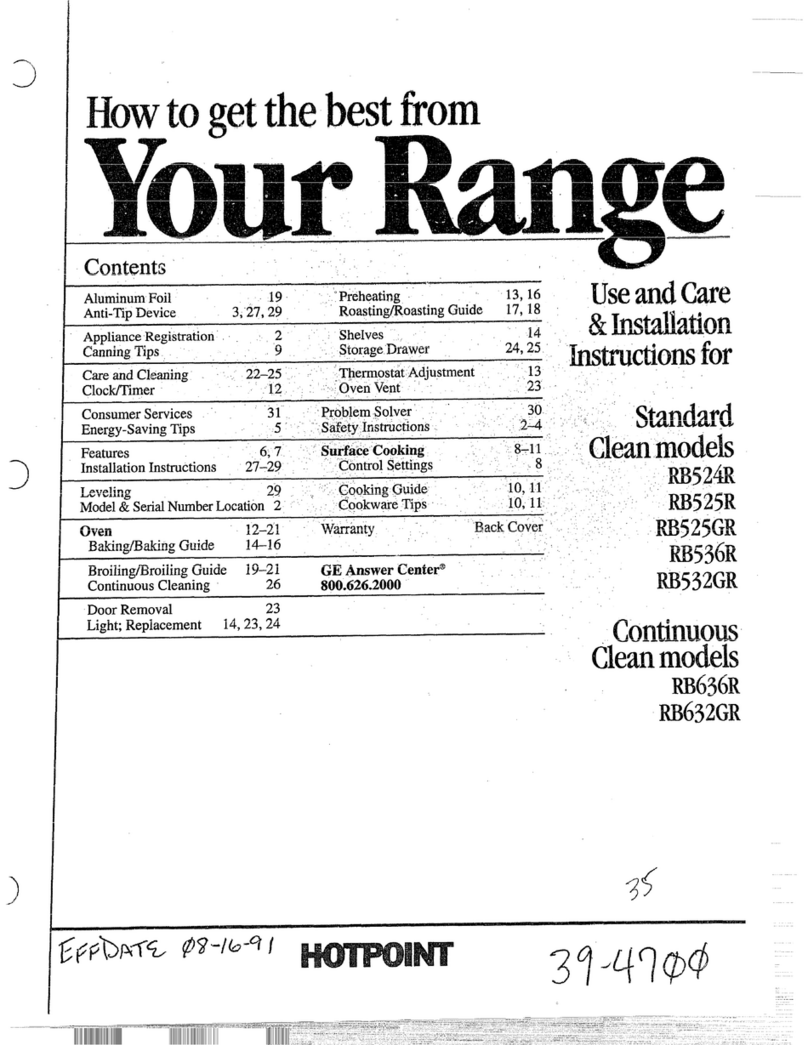p/n 316441425(0510)
SERVICE DATA SHEET
ElectricRanges withES100 ElectronicOven Control
RTD SCALE
Temperature (°F) Resistance (ohms)
32 ± 1.9 1000 ± 4.0
75 ± 2.5 1091 ± 5.3
250 ± 4.4 1453 ± 8.9
350 ± 5.4 1654 ± 10.8
450 ± 6.9 1852 ± 13.5
550 ± 8.2 2047 ± 15.8
650 ± 9.6 2237 ± 18.5
900 ± 13.6 2697 ± 24.4
ELECTRONICOVENCONTROL(rearview)
IMPORTANT
DO NOT REMOVE THIS BAG
OR DESTROY THE CONTENTS
WIRINGDIAGRAMSANDSERVICE
INFORMATION ENCLOSED
REPLACE CONTENTS IN BAG
RESISTANCETEMPERATUREDECTECTOR
E.O.C.CONTROLCONNECTIONS (J1) ELECTRONICOVENCONTROLFAULTCODEDESCRIPTIONS (ES100CONTROL)
Note: Onlytwo faultcodesare displayed bythis control -F1 orF3. Generally,F1 displayimplies the electronicoven control itself hasdetectedan internal
malfunction. F3 implies the control has detected a sensor probe failure. In either case, an alarm will accompany a displayed F1 or F3.
1. Shorted keypad.
2. Control's internal checksum may have become corrupted.
3. Control has sensed a potential runaway oven condition. Control
may have shorted relay, RTD sensor probe may have gone bad.
1. OpenRTDsensorprobe.Note:TheEOCwillinitiallydisplayanF1
forthiscondition.TheEOCthinksarunawayovenconditionexists.
2. ShortedRTD sensor probe.Note:The F3 forshorted probe should
only occur when the oven is active or when an attempt is made to
enter a mode.
Likely Failure Condition/Cause Suggested Corrective Action
Fault Code
1. Replace EOC.
2. Disconnectpower, wait30 secondsand reapplypower. Iffault returns
upon power-up, replace EOC.
3. Check RTD sensor probe and replace if necessary. If oven is
overheating, disconnect power. If oven continues to overheat when
thepowerisreapplied, replaceEOC.Severe overheatingmayrequire
the entire oven to be replaced, should damage be extensive.
1. Check resistance at room temperature and compare to RTD sensor
resistancechart. If resistance does not match the chart, replace RTD
sensor probe.
2. Checkresistanceatroomtemperature, ifless than500 ohms,replace
RTD sensor probe.
F3
F1
CIRCUITANALYSISMATRIX(ES100CONTROL)
NOTICE - This service data sheet is intended for use by persons having electrical and mechanical training and a level of knowledge of
these subjects generally considered acceptable in the appliance repair trade. The manufacturer cannot be responsible, nor assume any
liability for injury or damage of any kind arising from the use of this data sheet.
SAFESERVICINGPRACTICES
To avoid the possibility of personal injury and/or property damage, it is important that safe servicing practices be observed. The following are examples, but
without limitation, of such practices.
1. Before servicing or moving an appliance remove power cord from electrical outlet, trip circuit breaker to OFF, or remove fuse.
2. Never interfere with the proper installation of any safety device.
3. GROUNDING: The standard color coding for safety ground wires is GREEN or GREEN WITH YELLOW STRIPES. Ground leads are not to be used
as current carrying conductors. It is extremely important that the service technician reestablish all safety grounds prior to completion
of service. Failure to do so will create a potential safety hazard.
4. Prior to returning the product to service, ensure that:
•All electric connections are correct and secure.
•All electrical leads are properly dressed and secured away from sharp edges, high-temperature components, and moving parts.
•All uninsulated electrical terminals, connectors, heaters, etc. are adequately spaced away from all metal parts and panels.
•All safety grounds (both internal and external) are correctly and securely reassembled.
OVENCALIBRATION
Set the electronic oven control for normal baking at 350°F. Obtain an average oven temperature after a minimum of 5 cycles. Press CANCEL or CLEAR to
end bake mode.
